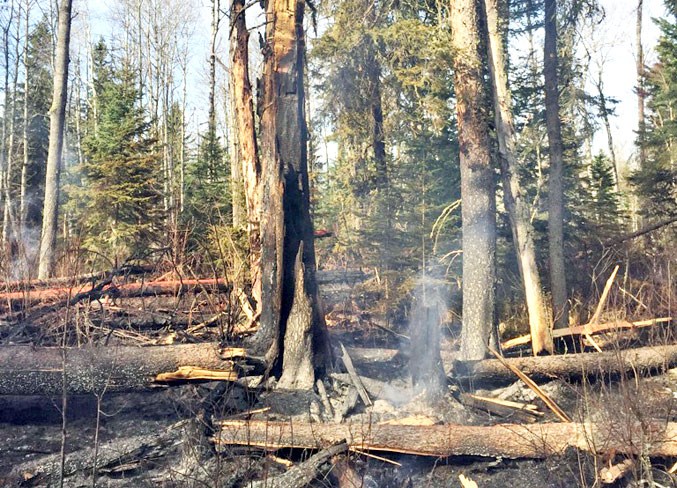This season there has been close to 60 wildfires already. That’s almost as many wildfires the area had in total last summer.
Why the big difference?
Leslie Lozinski, Wildfire Information Officer with Alberta Agriculture and Forestry, said that last year was a below average year for fires in this part of the province, largely due to a much cooler, wetter summer than we usually have. Other parts of the province, like southern Alberta, had more fires, and bigger fires than usual, due to dryer, warmer and windy conditions.
Lozinski expects the wildfire danger rating to remain HIGH to Very HIGH until “green up”, a term used by the wildfire crews to indicate a change in moisture content of the grass and leafing out of the trees.
“Once the snow goes and the ground dries up, we’re left with brown grass from last fall. This grass is very dry – and it’s everywhere in our area – in meadows and fields, in ditches along roads, along pipeline crossings and railroad tracks, and in yards,” said Lozinski.
It’s this dry grass that represents the biggest threat for spring wildfires. Easily ignited by hot quads, sparks from welders, or cigarettes discarded along the roads, grass fires spread quickly, usually accelerated by gusty spring winds.
Once the weather warms up and the region receives rain, the grass will “green up” and the leaves will come out on the deciduous trees.
“Green grass is harder to burn than brown grass,” said Lozinski, adding that although green grass still burns, it burns slower, and wildfires don’t spread as quickly thru green grass.
She is quick to add that the fire danger doesn’t disappear after the grass turns green. After green up, the worry goes from grass fires to forest fires, and the changing weather patterns also mean that lightning becomes a factor in the start of fires.
If a wildfire isn’t caused by a human, it’s caused by lightning. That was the case for a wildfire that started on Saturday in the Spencer Lake area. The fire was spotted by a Lookout Tower observer and reported. The airtankers were dispatched to the fire and quickly got it under control after two drops.
Crews flew in by helicopter and did the hard, hand work, digging and making sure the fire wasn’t going to spread.
Lozinski explained that lightning crossed the area on Wednesday, and that the charge from lightning can remain in the ground for up to three days. The conditions on Saturday were just right, with the warm, dry day and just enough wind to stir things up.
“We monitor lightning strikes and patrol those areas for three days, watchful for any signs of smoke or fire,” said Lozinski.
If you see smoke or fire in the forest, please call 310-FIRE (3473).



